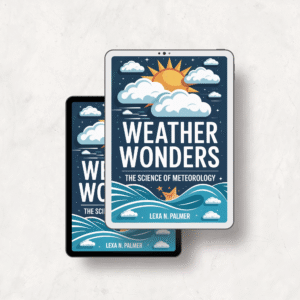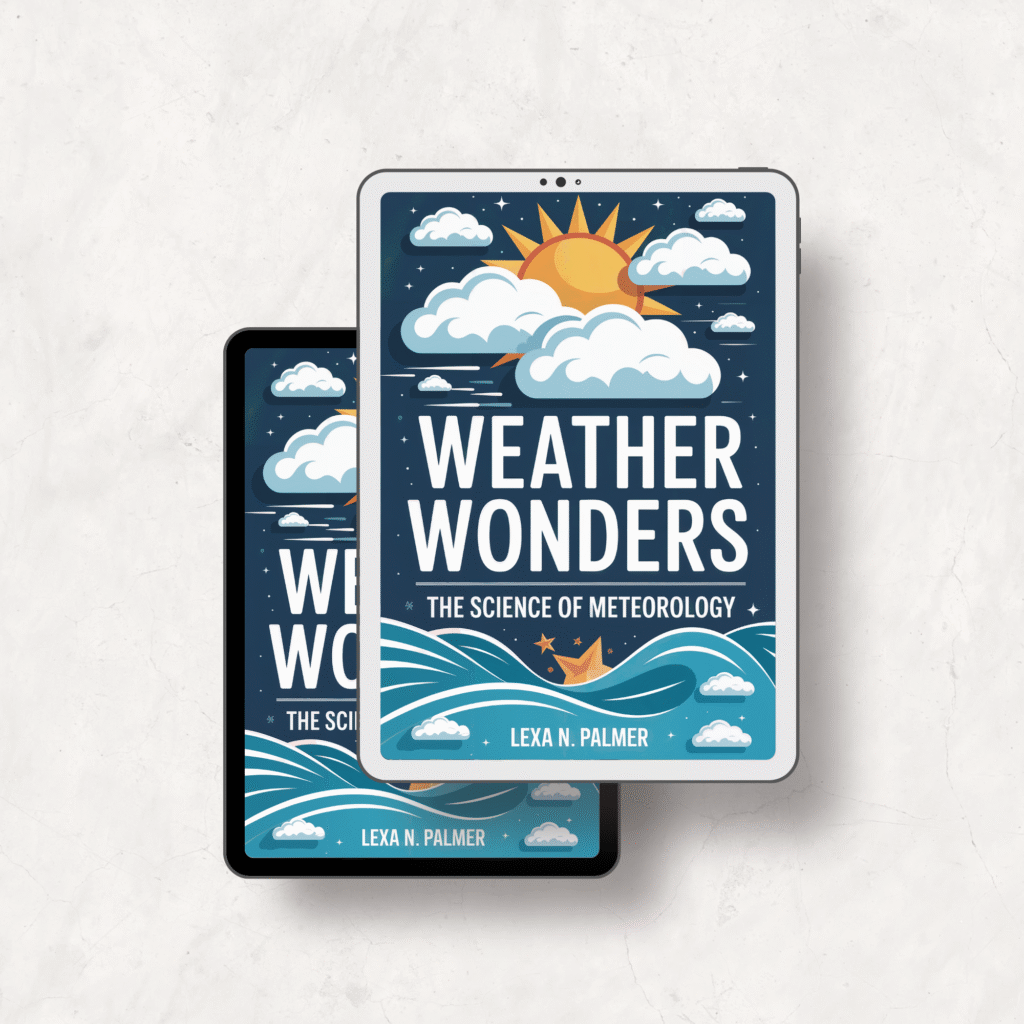Weather Wonders: The Science of Meteorology Book Review – Complete Guide to Understanding Weather Science

Weather Wonders: The Science of Meteorology transforms complex atmospheric science into accessible knowledge that anyone can understand and apply. Whether you’re struggling to interpret daily weather forecasts, curious about severe weather phenomena, or seeking professional meteorological knowledge for agriculture, aviation, or energy sectors, this comprehensive guide bridges the gap between scientific theory and practical application. Written by a seasoned atmospheric scientist with decades of research experience, this meteorology book offers clear explanations of weather patterns, forecasting techniques, and climate modeling without overwhelming technical jargon.
This exceptional meteorology guide systematically covers everything from basic atmospheric dynamics to advanced weather prediction methods, making it an invaluable resource for students, professionals, and weather enthusiasts alike. The book’s unique approach combines rigorous scientific principles with real-world applications, helping readers develop critical thinking skills for evaluating weather information and understanding severe weather impacts on daily life.
What You’ll Discover
- Master Atmospheric Dynamics: Learn how energy flows and pressure systems drive weather patterns, enabling you to understand the fundamental forces behind daily weather changes
- Decode Weather Forecasting Methods: Discover numerical prediction techniques and ensemble forecasting that help meteorologists predict weather conditions with increasing accuracy
- Understand Cloud Physics and Precipitation: Gain insights into moisture cycles, cloud formation processes, and how different precipitation types develop in various atmospheric conditions
- Interpret Weather Technology and Instruments: Explore how surface stations, satellites, and radar systems collect critical weather data that powers modern forecasting capabilities
- Analyze Severe Weather Phenomena: Learn to identify triggers and impacts of storms, hurricanes, heat waves, and other extreme weather events that affect public safety
- Apply Climate Modeling for Long-term Planning: Understand how climate connections link daily weather patterns to broader environmental trends and adaptation strategies
Why This Book Matters
Weather science affects every aspect of our lives, from daily clothing choices to billion-dollar agricultural decisions, yet most people lack the knowledge to critically evaluate weather information. This meteorology book fills that crucial gap by providing scientific literacy that enhances decision-making across personal and professional contexts. The author’s expertise in atmospheric research and teaching ensures that complex concepts are presented with clarity and precision, making advanced meteorological knowledge accessible to readers without extensive scientific backgrounds.
Unlike generic weather guides, Weather Wonders emphasizes practical applications in agriculture, aviation, and renewable energy sectors while maintaining scientific rigor. Readers gain confidence interpreting forecasts, understanding forecast uncertainty, and recognizing patterns that indicate changing weather conditions, ultimately improving their ability to plan activities and respond effectively to atmospheric events.
Key Features
This comprehensive ebook spans multiple detailed chapters covering atmospheric dynamics, weather instrumentation, climate modeling, and severe weather analysis. Available as an instant digital download, you’ll receive immediate access to clear diagrams, real-world case studies, and practical exercises that reinforce learning. The format allows for easy reading on any device, with printable sections for hands-on reference during fieldwork or professional applications. Also available as audiobook on Google Play Books and Spotify for convenient listening during commutes or outdoor activities when weather observation opportunities arise.
Frequently Asked Questions
How does Weather Wonders make complex meteorology concepts accessible for beginners?
The book uses clear analogies and real-world examples to explain atmospheric processes, starting from observable phenomena like cloud formation before introducing scientific frameworks. Rather than overwhelming readers with equations, it builds understanding gradually through relatable scenarios and practical applications that connect theory to everyday weather experiences.
Can this meteorology book improve my daily weather-related decision making?
Absolutely. By understanding how weather models generate probabilities and learning to interpret forecast language beyond simple “chance of rain” predictions, readers develop skills to assess weather risks more accurately for planning outdoor events, travel routes, and safety preparations. The book teaches pattern recognition that complements app-based forecasts.
Does Weather Wonders cover severe weather and climate variability effectively?
Yes, the book thoroughly addresses severe weather phenomena including storms, hurricanes, and extreme temperature events while explaining how uncertainty is inherent in atmospheric science. It covers probabilistic forecasting, early warning systems, and distinguishes between short-term weather patterns and long-term climate trends for comprehensive understanding.
Get Your Copy Today
Transform your understanding of weather science with this comprehensive meteorology guide. Available for instant download at just $6.99, this ebook provides exceptional value compared to expensive meteorology courses or technical textbooks. Also available as audiobook on Google Play Books and Spotify for flexible learning during commutes or outdoor activities. Purchase your copy through all major ebook retailers including Apple Books, Barnes & Noble, and Kobo to begin mastering weather science and improving your forecasting skills today.
Watch the Video Review

